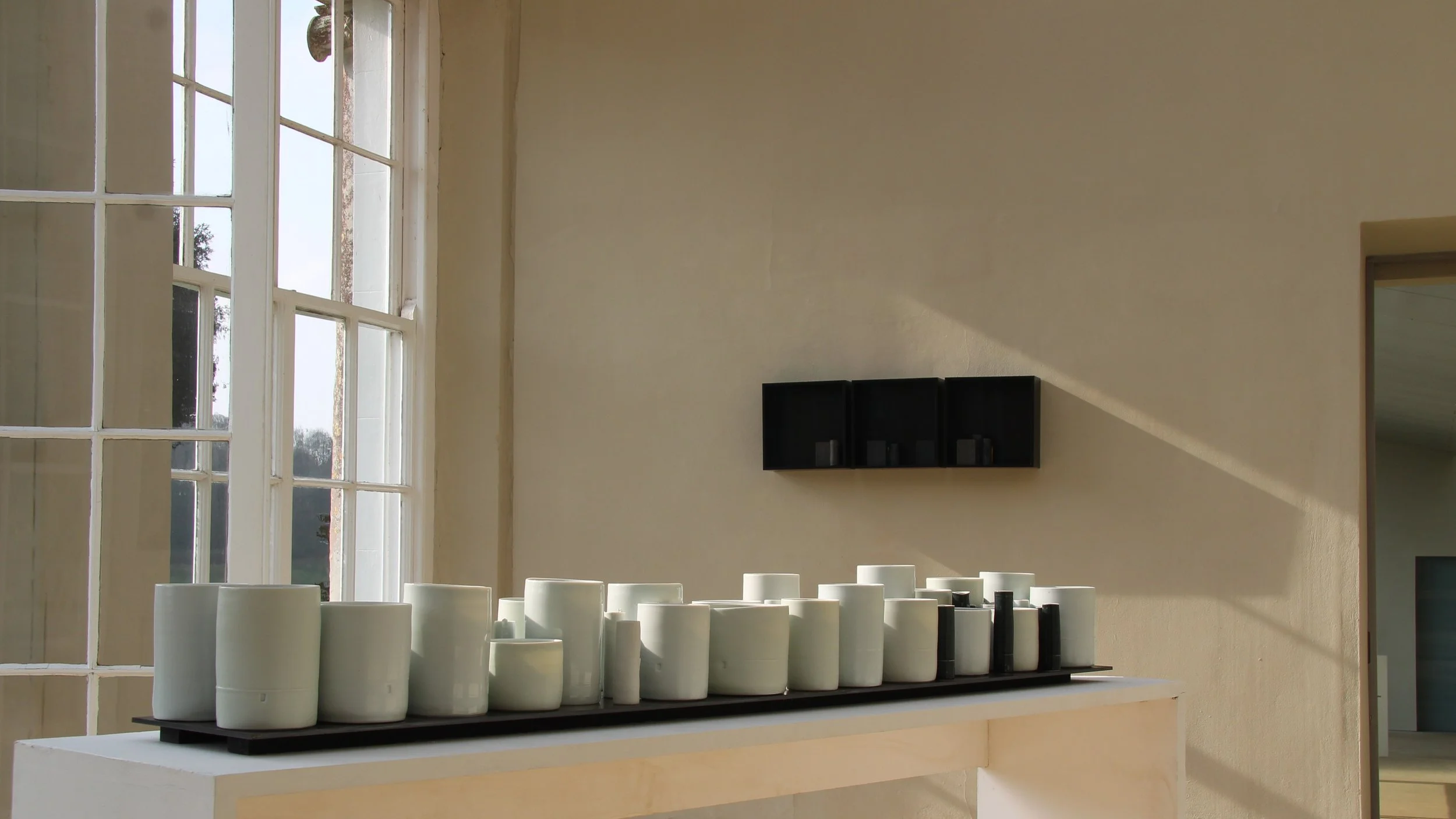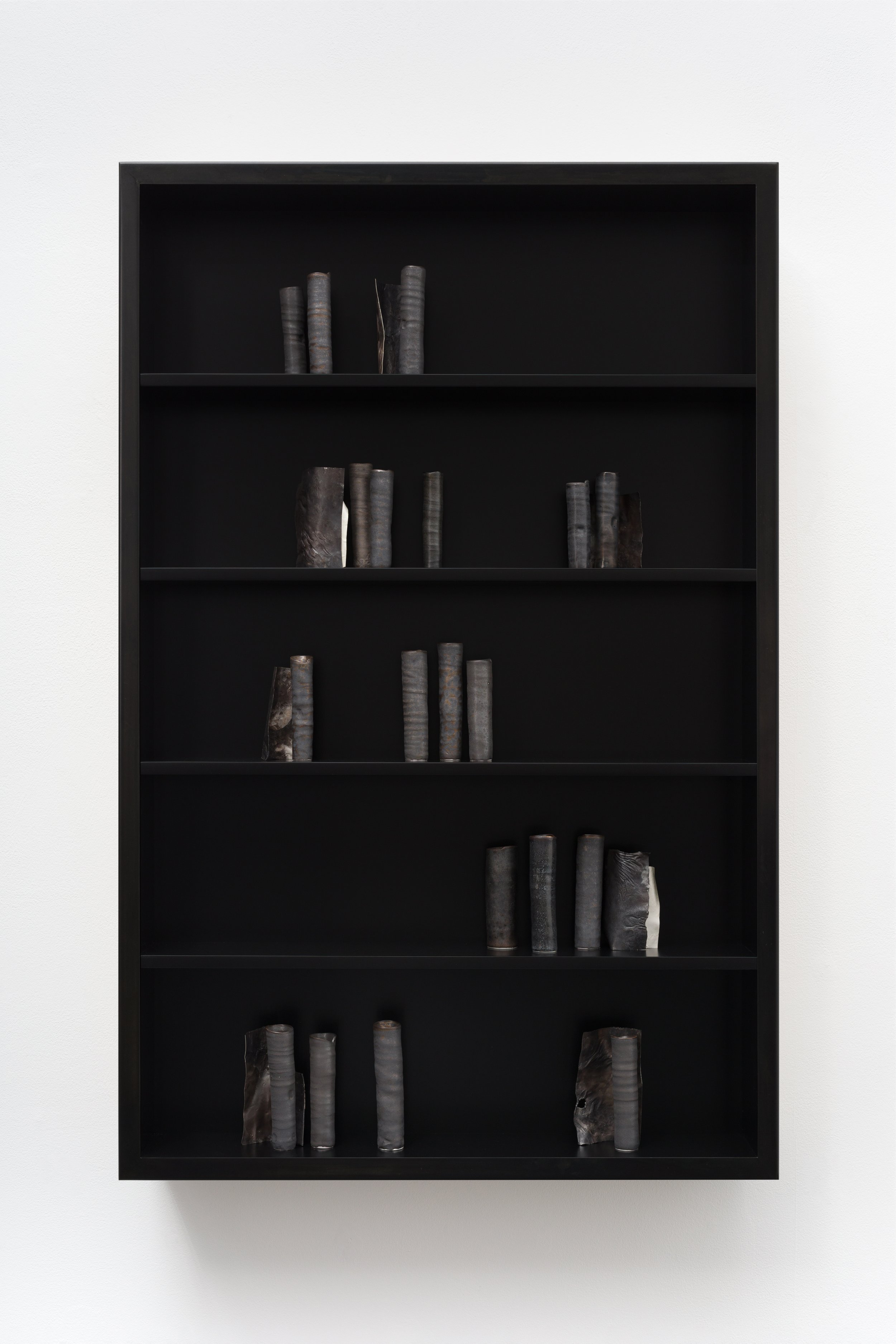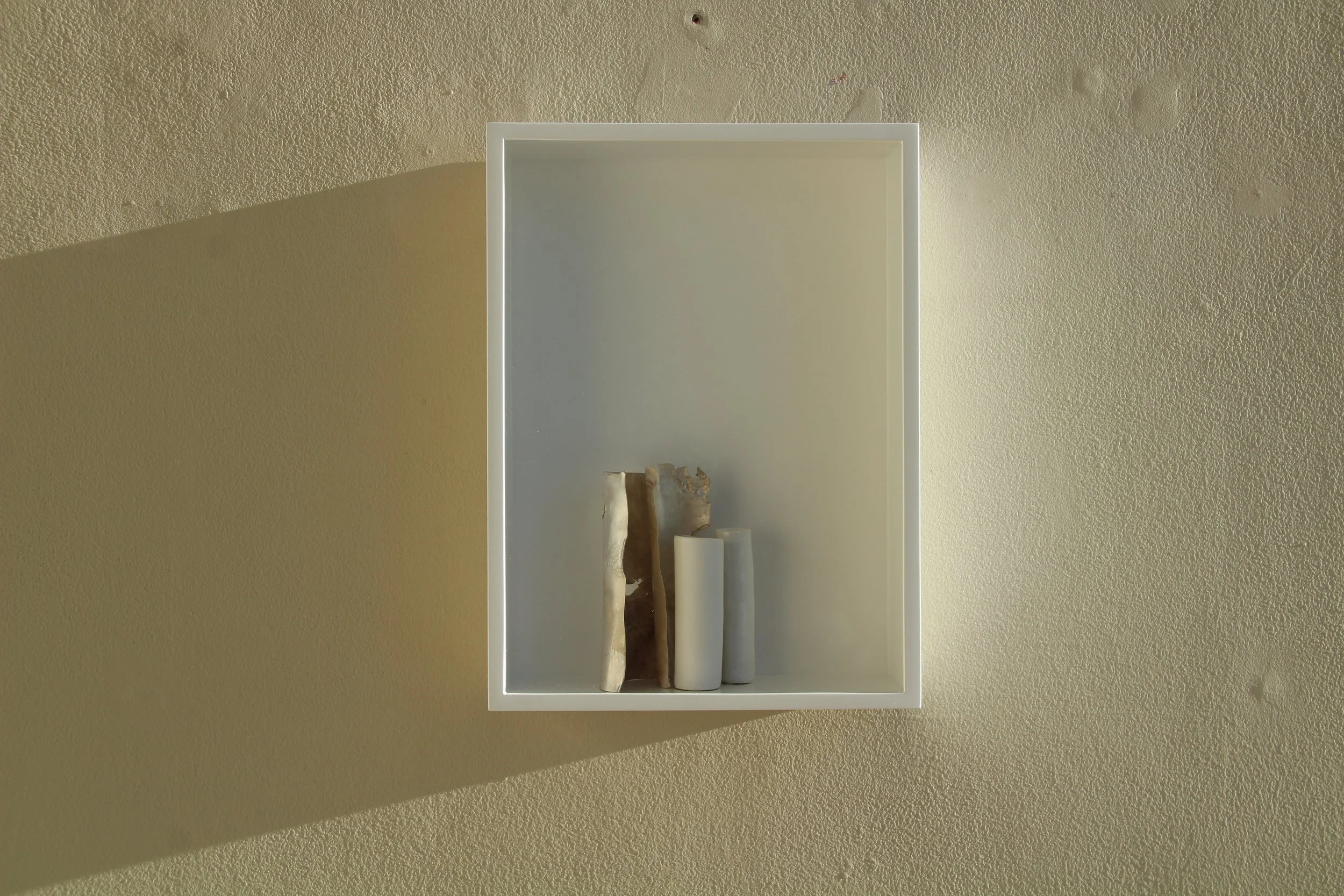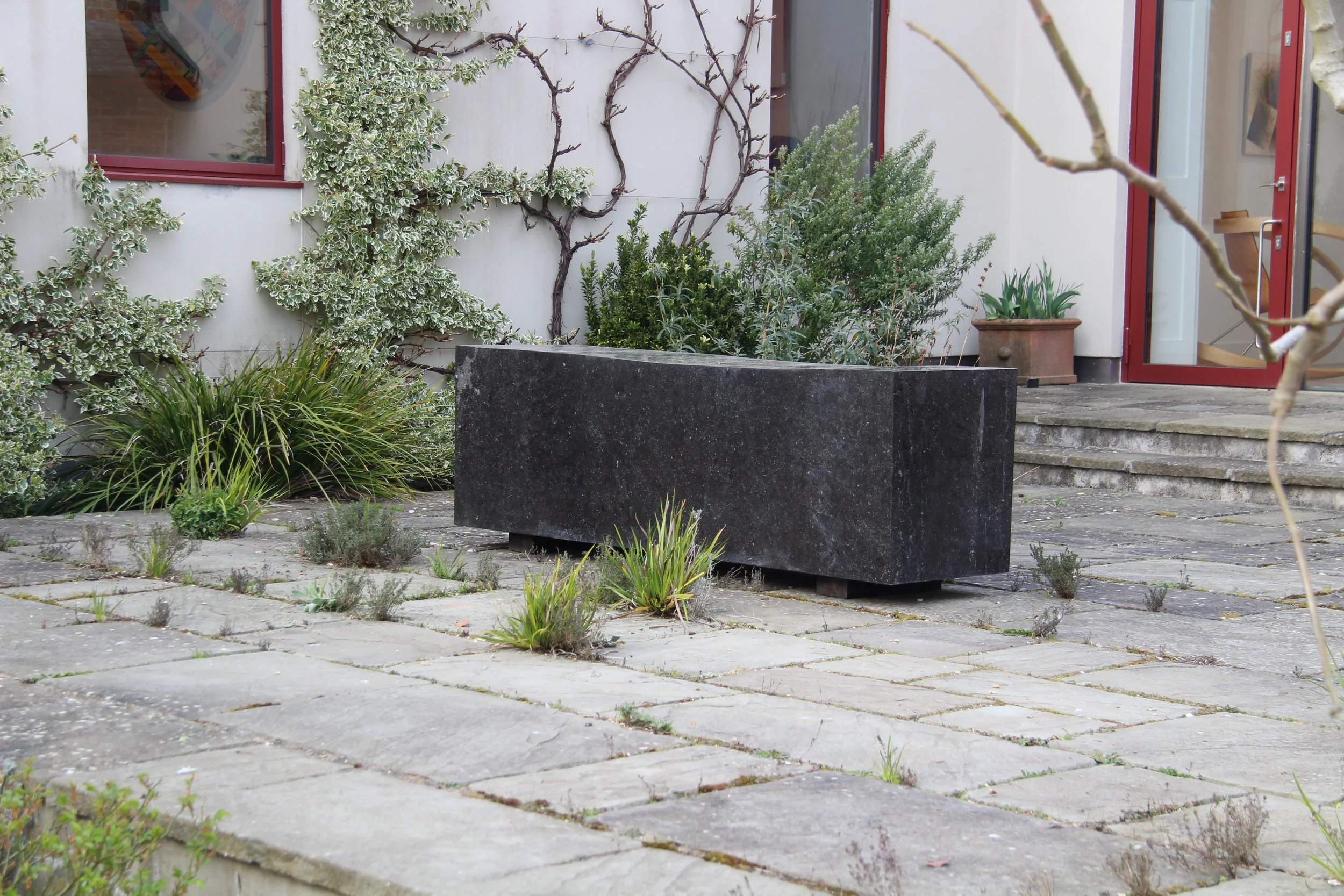Edmund de Waal’s work installed in the Sculpture Gallery as a part of the exhibition ‘Essence’ in 2024.
Edmund de Waal
Edmund de Waal (b. 1964) is known for the way his practice spans both visual and literary disciplines.
Much of de Waal's work is centred around the contingency of memory: bringing particular histories of loss and exile into renewed life. Both his artistic and written practice have broken new ground through their critical engagement with the history and potential of ceramics, as well as with architecture, music, dance and poetry. De Waal continually investigates themes of diaspora, memorial, materiality and the colour white with his artworks.
Edmund de Waal’s current exhibition, Playing with Fire: Edmund de Waal and Axel Salto is set to go to The Hepworth Wakefield in November 2025 until May 2026.
Selected recent museum shows include this must be the place at Gagosian, New York (2023); we live here, forever taking leave at Waddesdon Manor, Buckinghamshire (2022); This Living Hand: Edmund de Waal presents Henry Moore at Henry Moore Studios & Gardens in Perry Green (2021); Lettres à Camondo at Musée Nissim de Camondo, Paris (2021), The Hare with Amber Eyes at the Jewish Museum, New York (2021); and tact here at the New Art Centre in 2020.
In March 2020, de Waal opened a second iteration of his library of exile at the British Museum London. This intervention followed the first presentation of the project at the Venice Biennale in 2019. Consisting of a pavilion of 2,000 books, written by those forced to leave their own country or exiled within it, library of exile marks one of de Waal's most ambitious projects to date.
From 2013-2015, a series of projects and events were held to coincide with the publication of The White Road: a pilgrimage of sorts in 2015, including white at the Royal Academy of Arts, London (2015) and On White at the Fitzwilliam Museum, Cambridge (2013).
Among his major installations on permanent display are Signs & Wonders (2009) at the V&A Museum, London and an idea (for the journey) (2013) at the Rijksmuseum, Amsterdam.
De Waal is also renowned for his bestselling memoir, The Hare with Amber Eyes (2010), which won many literary prizes including the RSL Ondaatje Prize and the Costa Biography Award and has been translated into over 30 languages. In 2016, it was chosen as the Independent Bookshop Week's Book of the Decade. Other titles include Letters to Camondo (2021), The White Road (2015), The Pot Book (2011), 20th Century Ceramics (2003) and de Waal's critical study on Bernard Leach for Tate (1997).
Edmund de Waal
this place, II, 2024
Kilkenny stone and silver
50.5 x 108.5 x 35.5 cm
19 ⅞ x 42 ⁷⁄₁₀ x 14 in.
Edmund de Waal
this place, I, 2024
Kilkenny stone and silver
50.5 x 103 x 33.6 cm
19 ⅞ x 40 ½ x 13 ⅖ in.
De Waal was made an OBE in 2011, and in 2021 was made a CBE for his Services to the Arts. He was made a Fellow of the Royal Society of Literature in 2021. De Waal was on the Advisory Committee for the Royal Mint and was a Trustee of the V&A Museum between 2011 – 2019. He was a Trustee of the Gilbert Trust between 2011 – 2024, and a member of the Young V&A Committee between 2020 – 2023. In 2015 he was awarded the Windham-Campbell Prize for non-fiction by Yale University. He has received honorary doctorates from the University of the Arts London, Nottingham, Sheffield, York and Canterbury Christ Church universities and is an Honorary Fellow of Trinity Hall, Cambridge.
Please contact us for more information on works by Edmund de Waal.









